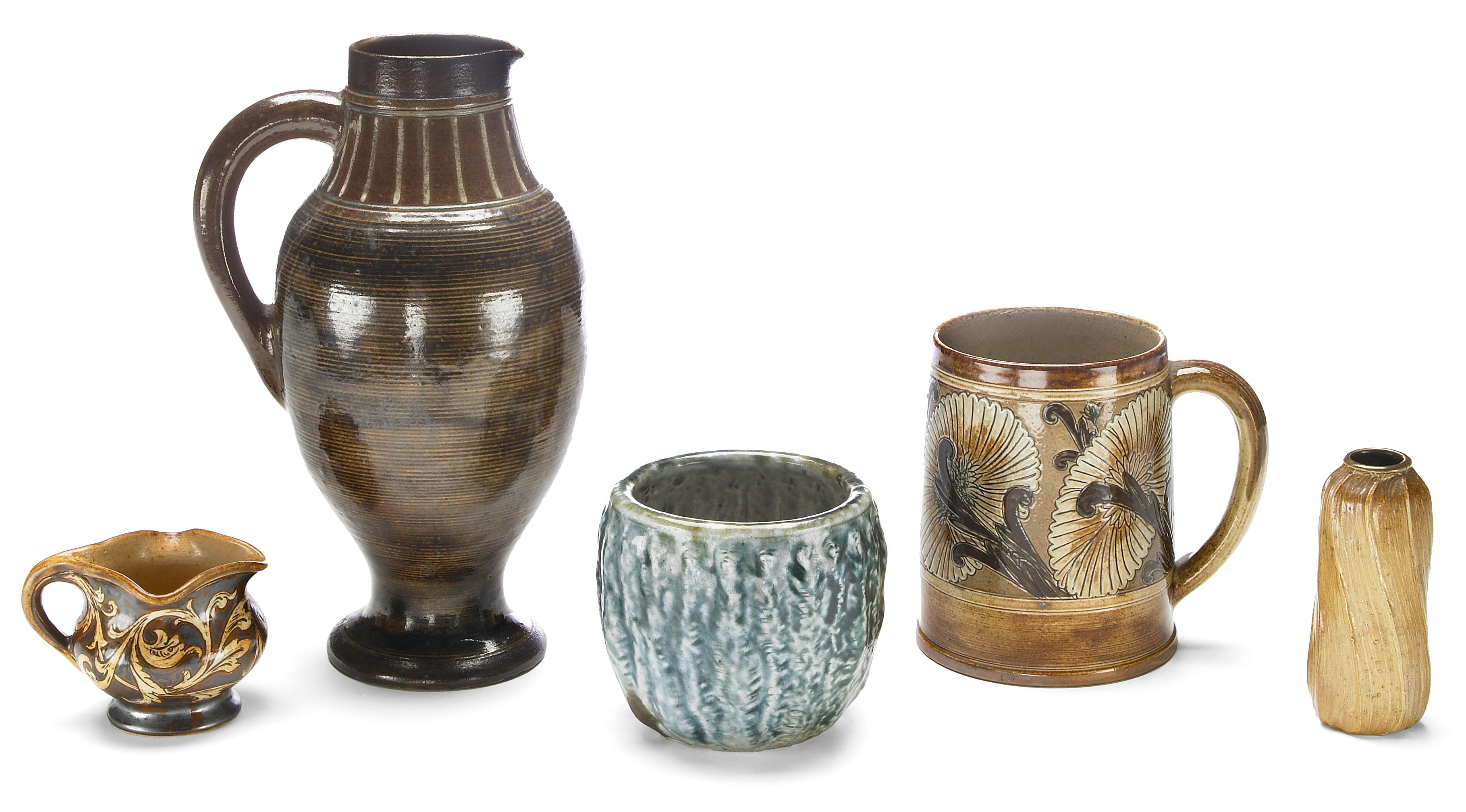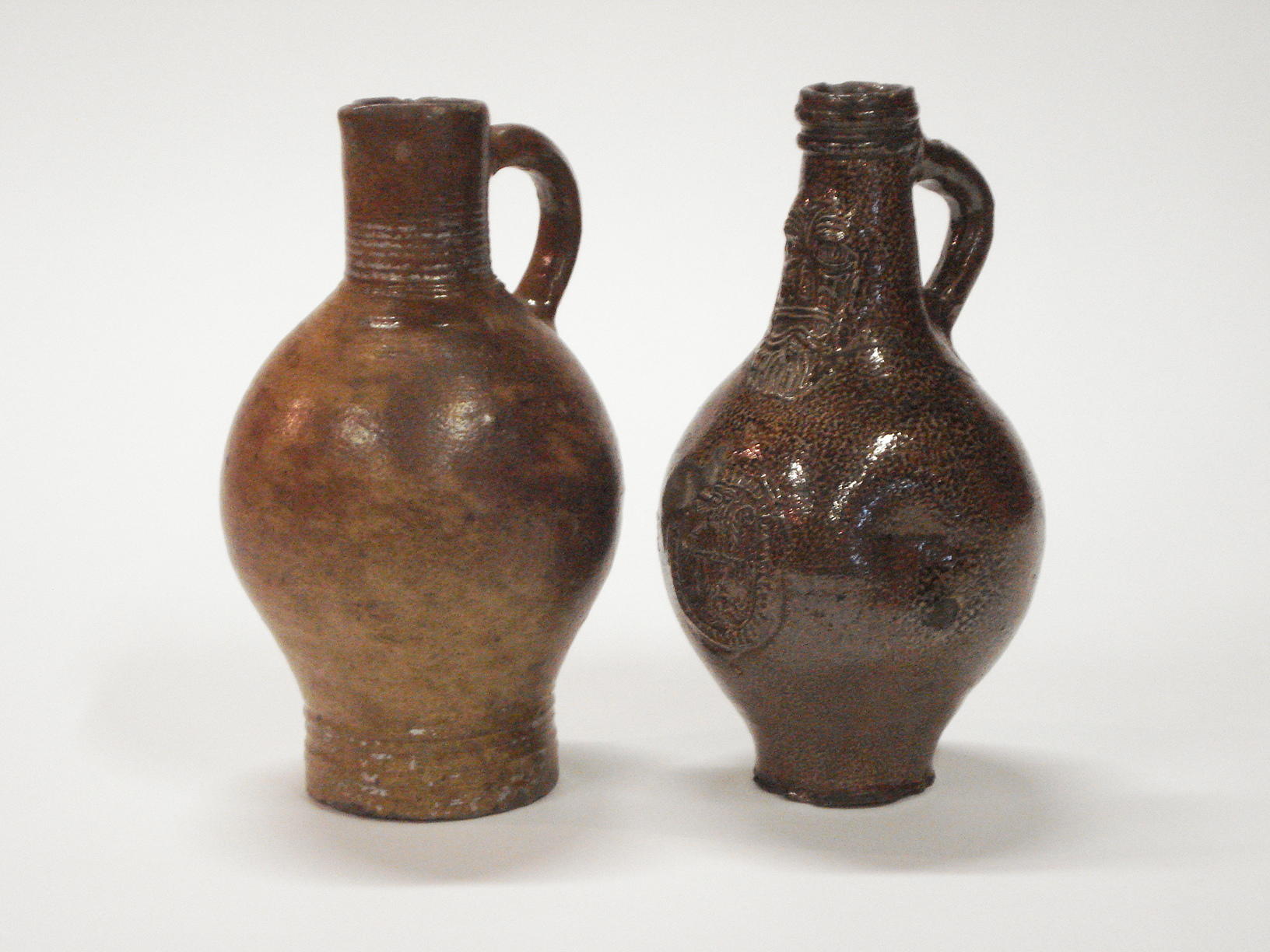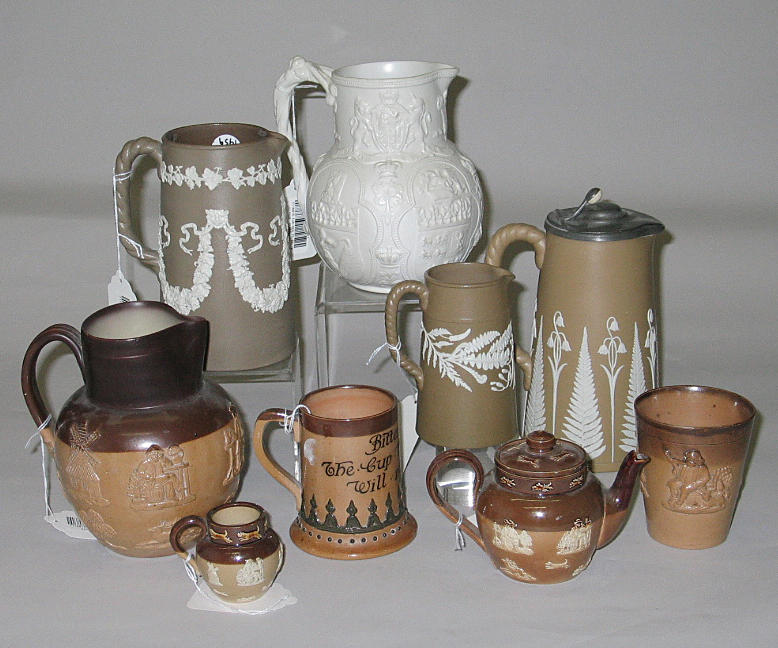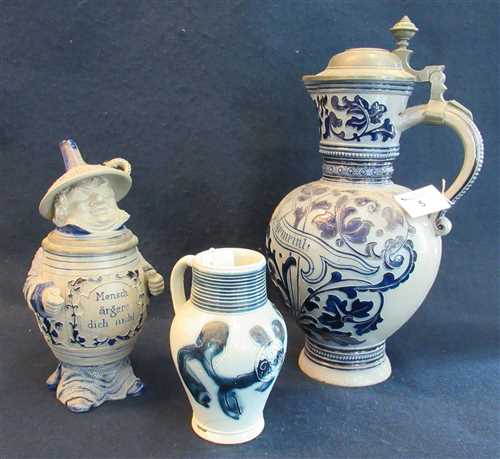Title: Stoneware pitcher or jug presented by pirate/privateer William Kidd to the Gardiners of Gardiner’s Island, off Long Island, New York, in 1699 Author: Place: Publisher: Date: c.1699 Description: Original 17th century stoneware pitcher with “ostrich egg finish,” with later engraved silver support bands and base. 27 cm (10½”) high, with diameter of 20 cm (7¾”) at the widest part. Marvelous artifact of the age of piracy, and of perhaps the most famous and memorable pirate of them all, Captain William Kidd a Scotsman born in Dundee in 1645. Though many consider him a privateer, using his rapacious swashbuckling skills in legitimate defense of crown and country, the distinction blurs, and his final destination was to be the gallows at Wapping, England, hanged for piracy in 1701 after a sensational trial on somewhat dubious charges. The “Kidd Pitcher” is a memento of his final days off the coast of North America, an unassuming, utilitarian object that speaks to his actions and to his genteel nature, and hints of long lost treasure buried to this day. Along with a few other objects and trinkets, it was given by Captain Kidd to John Gardiner and his wife Mary King Gardiner at Gardiner's Island, Long Island, New York, as tokens of appreciation for assistance in replenishing supplies for his ship, and, history shows, safeguarding “several bales and boxes containing gold, silver, jewels and cloth of various sorts.” The pitcher was filled with “sweetmeats” (i.e. dried fruit) for the Gardiners’ children, a sought-after delicacy at the time. Such consideration belies any impression of a hardened, bloodthirsty buccaneer, and reveals, perhaps, the warmer side of Kidd’s persona. The pitcher, or jug, has remained in the Gardiner family to this day, passed down from generation to generation. This progression is given in the 1919 issue of the New York Genealogical and Biographical Record (see the links section in the online version of the catalogue), at which time the owner was Lucretia Thatcher (Perry) Osborn, wife of famed paleontologist Henry Fairfield Osborn. From there it passed to the Osborn’s son, Alexander Perry Osborn, thence to his daughter, granddaughter, and the present owner, Alexander Osborn’s great granddaughter. At some time after 1881 it was supplied with an engraved silver base, delineating the descent through Lucretia Thatcher (Perry) Osborn, to whom it was given as a wedding present – at likely the same time it was reinforced with a silver band around the middle, on which is etched “The Kidd Pitcher” and “Sent by Captain Kidd to Mrs. John Gardiner on Gardiner’s Island July 1699”; a silver rim around the top was also added. Besides the aforementioned article in the New York Genealogical and Biographical Record for 1919, in which it is noted “The ‘pitcher’ is now on exhibition in the Metropolitan Museum of Art, New York City, loaned by Mrs. Osborn,” there is also a receipt from the museum to Col. A. Perry Osborn, from 1927, listing the pitcher as being on loan. A lengthy article in the Newsletter for the Preservation of Long Island Antiquities, October, 1961, gives a clear picture of the Kidd-Gardiner connection, and describes in detail “The Kidd Pitcher,” “…presently in the possession of Mrs. William (Lucretia Osborn) M*****, of San Francisco, a descendant of John Gardiner of Gardiner’s Island.” Captain William Kidd who conveyed this jug with treats for the children of the proprietor of Gardiner’s Island, in Gardiner’s bay between two peninsulas on the eastern end of Long Island, New York, remains one of the most famous of the buccaneers who sailed the seas in the 17th century, seeking plunder and gaining notoriety. There was a thin line between privateers - private sailors authorized by their government to attack foreign shipping during time of war - and pirates, who attacked indiscriminately for their personal gain. Kidd was primarily a privateer, seeking out French prizes, but the lure of trea
Title: Stoneware pitcher or jug presented by pirate/privateer William Kidd to the Gardiners of Gardiner’s Island, off Long Island, New York, in 1699 Author: Place: Publisher: Date: c.1699 Description: Original 17th century stoneware pitcher with “ostrich egg finish,” with later engraved silver support bands and base. 27 cm (10½”) high, with diameter of 20 cm (7¾”) at the widest part. Marvelous artifact of the age of piracy, and of perhaps the most famous and memorable pirate of them all, Captain William Kidd a Scotsman born in Dundee in 1645. Though many consider him a privateer, using his rapacious swashbuckling skills in legitimate defense of crown and country, the distinction blurs, and his final destination was to be the gallows at Wapping, England, hanged for piracy in 1701 after a sensational trial on somewhat dubious charges. The “Kidd Pitcher” is a memento of his final days off the coast of North America, an unassuming, utilitarian object that speaks to his actions and to his genteel nature, and hints of long lost treasure buried to this day. Along with a few other objects and trinkets, it was given by Captain Kidd to John Gardiner and his wife Mary King Gardiner at Gardiner's Island, Long Island, New York, as tokens of appreciation for assistance in replenishing supplies for his ship, and, history shows, safeguarding “several bales and boxes containing gold, silver, jewels and cloth of various sorts.” The pitcher was filled with “sweetmeats” (i.e. dried fruit) for the Gardiners’ children, a sought-after delicacy at the time. Such consideration belies any impression of a hardened, bloodthirsty buccaneer, and reveals, perhaps, the warmer side of Kidd’s persona. The pitcher, or jug, has remained in the Gardiner family to this day, passed down from generation to generation. This progression is given in the 1919 issue of the New York Genealogical and Biographical Record (see the links section in the online version of the catalogue), at which time the owner was Lucretia Thatcher (Perry) Osborn, wife of famed paleontologist Henry Fairfield Osborn. From there it passed to the Osborn’s son, Alexander Perry Osborn, thence to his daughter, granddaughter, and the present owner, Alexander Osborn’s great granddaughter. At some time after 1881 it was supplied with an engraved silver base, delineating the descent through Lucretia Thatcher (Perry) Osborn, to whom it was given as a wedding present – at likely the same time it was reinforced with a silver band around the middle, on which is etched “The Kidd Pitcher” and “Sent by Captain Kidd to Mrs. John Gardiner on Gardiner’s Island July 1699”; a silver rim around the top was also added. Besides the aforementioned article in the New York Genealogical and Biographical Record for 1919, in which it is noted “The ‘pitcher’ is now on exhibition in the Metropolitan Museum of Art, New York City, loaned by Mrs. Osborn,” there is also a receipt from the museum to Col. A. Perry Osborn, from 1927, listing the pitcher as being on loan. A lengthy article in the Newsletter for the Preservation of Long Island Antiquities, October, 1961, gives a clear picture of the Kidd-Gardiner connection, and describes in detail “The Kidd Pitcher,” “…presently in the possession of Mrs. William (Lucretia Osborn) M*****, of San Francisco, a descendant of John Gardiner of Gardiner’s Island.” Captain William Kidd who conveyed this jug with treats for the children of the proprietor of Gardiner’s Island, in Gardiner’s bay between two peninsulas on the eastern end of Long Island, New York, remains one of the most famous of the buccaneers who sailed the seas in the 17th century, seeking plunder and gaining notoriety. There was a thin line between privateers - private sailors authorized by their government to attack foreign shipping during time of war - and pirates, who attacked indiscriminately for their personal gain. Kidd was primarily a privateer, seeking out French prizes, but the lure of trea













Testen Sie LotSearch und seine Premium-Features 7 Tage - ohne Kosten!
Lassen Sie sich automatisch über neue Objekte in kommenden Auktionen benachrichtigen.
Suchauftrag anlegen